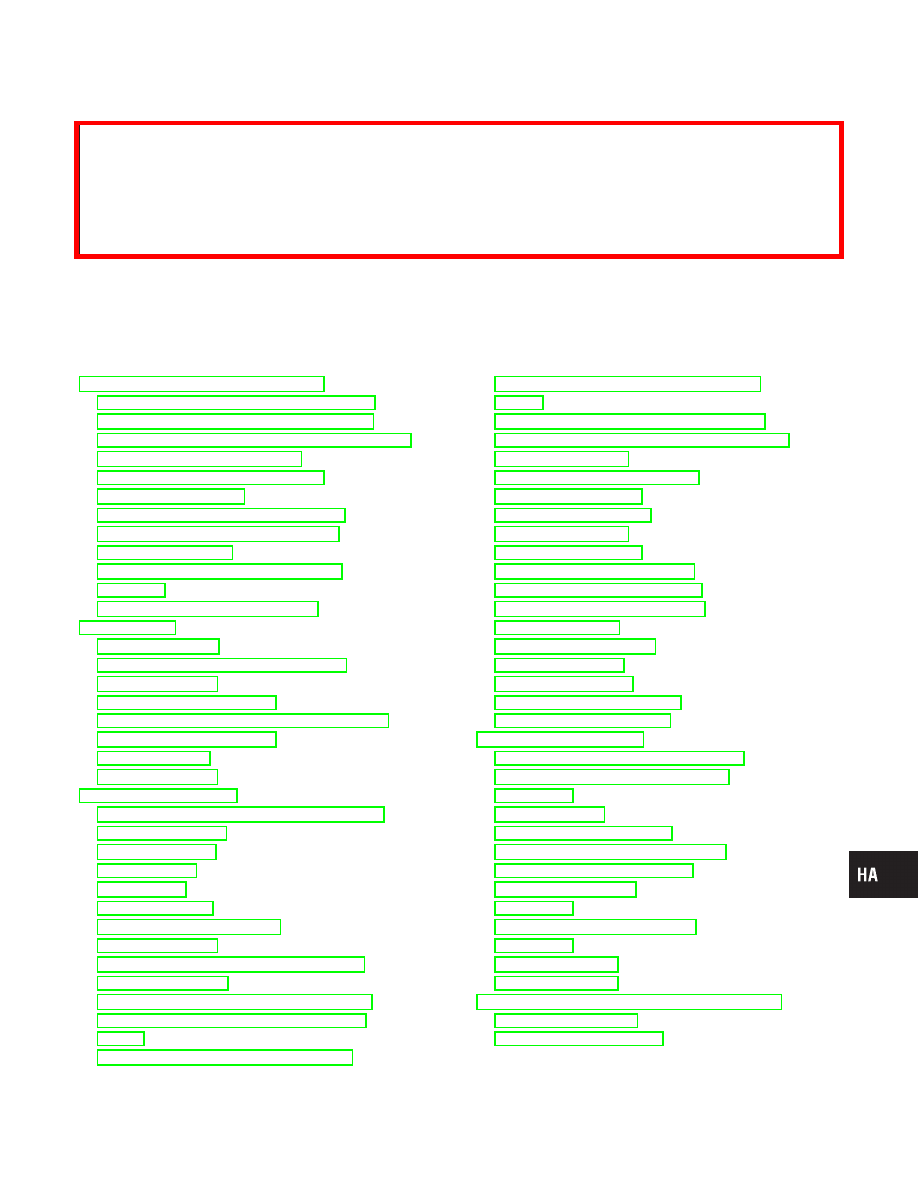Infiniti Q45 (FY33). Manual - part 459

HEATER &
AIR CONDITIONER
CONTENTS
PRECAUTIONS AND PREPARATION............................3
Supplemental Restraint System (SRS)
...............3
Precautions for Working with HFC-134a (R-134a) .....3
General Refrigerant Precautions .................................4
Precautions for Leak Detection Dye............................4
A/C Identification Label................................................5
Precautions for Refrigerant Connection ......................5
Precautions for Servicing Compressor........................8
Special Service Tools ..................................................9
HFC-134a (R-134a) Service Tools and
Equipment..................................................................10
Precautions for Service Equipment ...........................14
DESCRIPTION ...............................................................16
Refrigeration Cycle ....................................................16
V-6 Variable Displacement Compressor....................17
Component Layout ....................................................20
Air Conditioner LAN System......................................21
Automatic Temperature Control (ATC) System .........23
Overview of Control System......................................24
Control Operation ......................................................24
Discharge Air Flow.....................................................27
TROUBLE DIAGNOSES ...............................................29
How to Perform Trouble Diagnoses for Quick
and Accurate Repair ..................................................29
Operational Check .....................................................30
Symptom Chart..........................................................36
Self-diagnosis ............................................................37
Preliminary Check......................................................55
Performance Test Diagnoses ....................................63
Performance Chart ....................................................65
Trouble Diagnoses for Abnormal Pressure ...............66
Component Location..................................................69
Circuit Diagram/Without Navigation System .............71
Wiring Diagram - A/C -/Without Navigation
System .......................................................................72
Circuit Diagram/With Navigation System ..................77
Wiring Diagram - A/C, A -/With Navigation
System .......................................................................78
Auto Amp. Terminals and Reference Value...............83
Main Power Supply and Ground Circuit Check ........86
Self-diagnosis Circuit .................................................88
Multiplex Communication Circuit ...............................89
Ambient Sensor Circuit..............................................90
In-vehicle Sensor Circuit............................................93
Intake Sensor Circuit .................................................96
Sunload Sensor Circuit..............................................97
Mode Door Motor Circuit (LAN)...............................100
Air Mix Door Motor Circuit (LAN) ............................102
Bi-level Door Motor Circuit (LAN)............................104
LAN System Circuit .................................................106
Intake Door Motor Circuit ........................................109
Blower Motor Circuit ................................................ 113
Magnet Clutch Circuit .............................................. 118
Rear Vent Door Motor Circuit ..................................122
Control Linkage Adjustment.....................................123
SERVICE PROCEDURES ...........................................125
HFC-134a (R-134a) Service Procedure ..................125
Maintenance of Lubricant Quantity in
Compressor .............................................................128
Refrigerant Lines .....................................................130
Checking Refrigerant Leaks ....................................131
Electronic Refrigerant Leak Detector ......................131
Fluorescent Dye Leak Detector...............................134
Compressor Mounting .............................................135
Belt Tension .............................................................135
Fast Idle Control Device (FICD) ..............................135
Compressor .............................................................136
Compressor Clutch ..................................................136
Ventilation Air Filter..................................................139
SERVICE DATA AND SPECIFICATIONS (SDS) ........140
General Specifications.............................................140
Inspection and Adjustment ......................................140
GI
MA
EM
LC
EC
FE
AT
PD
FA
RA
BR
ST
RS
BT
EL
IDX